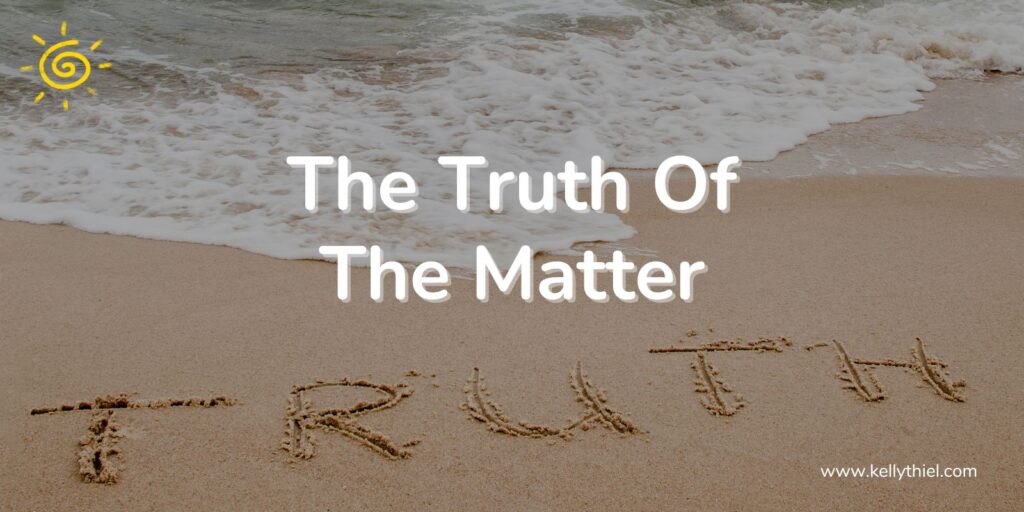What is truth?
Most people believe the truth to be the actual state of the matter. But how do we know what the actual state of the matter is?
When an event occurs and we begin to interpret, there is my side, your side, and what really happened. We often believe that our side is the truth, the whole truth, and nothing but the truth. How can that be?
It is very difficult to see the unfiltered truth because in order for you to interpret the event it must go through your own individual filter. Every human has a filter which is built from all of their experience in life and it acts as a lens through which they see the world. The meaning that you attach to people’s actions and to events is a major component of the filter that you use to define your reality. Your truth.
For example, a dog will have one meaning to someone who grew up with loving dogs and considered them part of the family. Another person will give that same dog a different meaning if they have been attacked by a dog and have scars to prove it.
It is through your filter that you create the narrative that becomes the story that you tell yourself about any given situation. It is the story that you think has happened, what you think is happening and what you think is going to happen. This story that you tell yourself will almost always skew the truth because it is not based on all the facts. It is often very emotional not objective.
This narrative is a product of adding, subtracting or simply overlooking information in an attempt to retell the situation in a way that makes you feel protected when you feel wronged, embarrassed or threatened.
Trust me when I say that this narrative can run wild and once it leaves the station, it may find itself very far from the truth.
So in order to see the truth of a situation, what does one do? Well, my darlings, I will attempt to explain this while being mindful of my own lens through which I view the world.
How do you see the truth?
Mindfulness allows you to take a moment and move to a vantage point that is one step outside yourself. It allows you to be objective and to observe where you might be missing data or where you might be adding your personal narrative that could be coloring the truth. Mindfulness can give you the moment to clearly look at your narrative and decide if it is based in objective reality or on the need for comfort or to protect your ego from damage.
Mindfulness not only allows you be objective by being more observant, it also gives you the opportunity to see and to take responsibility for your part in the situation. (That is part of the situation that belongs to you and you alone—the part that often takes great effort to own).
In addition, mindfulness also allows you to catch yourself when you are tempted to blame others instead of choosing to take ownership of your actions.
When we feel a lot of emotion around a situation, this is a big fat neon sign that you need to step back and go into mindfulness.
Take a breath. Breathe again.
Ask yourself 4 big questions:
- What is the truth apart from my narrative?
- What is my part in this?
- Am I blaming instead of taking responsibility for my actions?
- Am I reacting? If so, can I take a moment and choose how I want to respond?
This process is not for the faint of heart and I find it to be quite challenging. This is an exercise for those who want to seek out the truth of their reality and want to choose how to truthfully interact with life and other humans.
In every single moment, we have the opportunity to choose who we want to be.
Who do you want to be?
For more of my truth, check out my book, ‘Unapologetically Glorious’ here.

